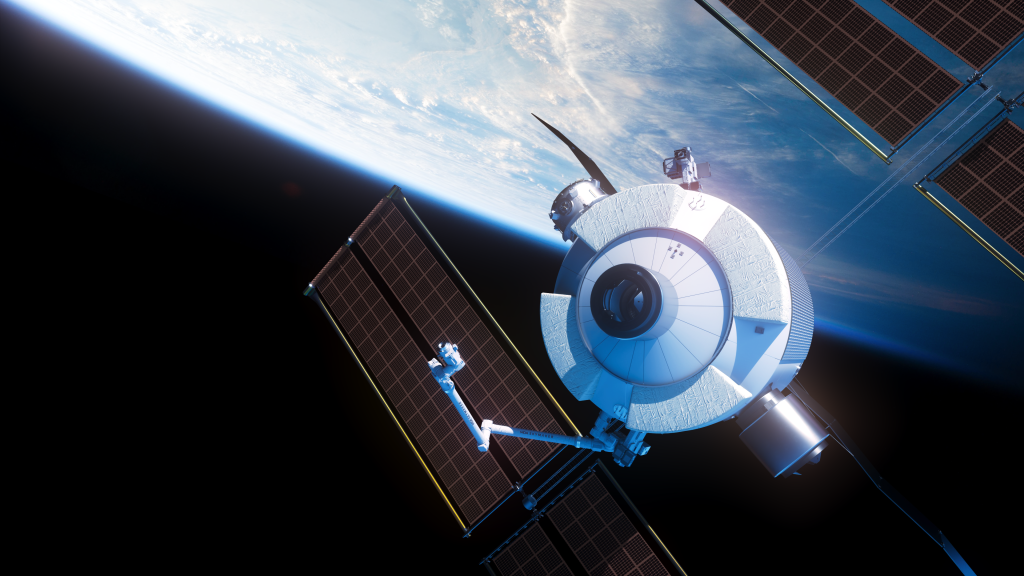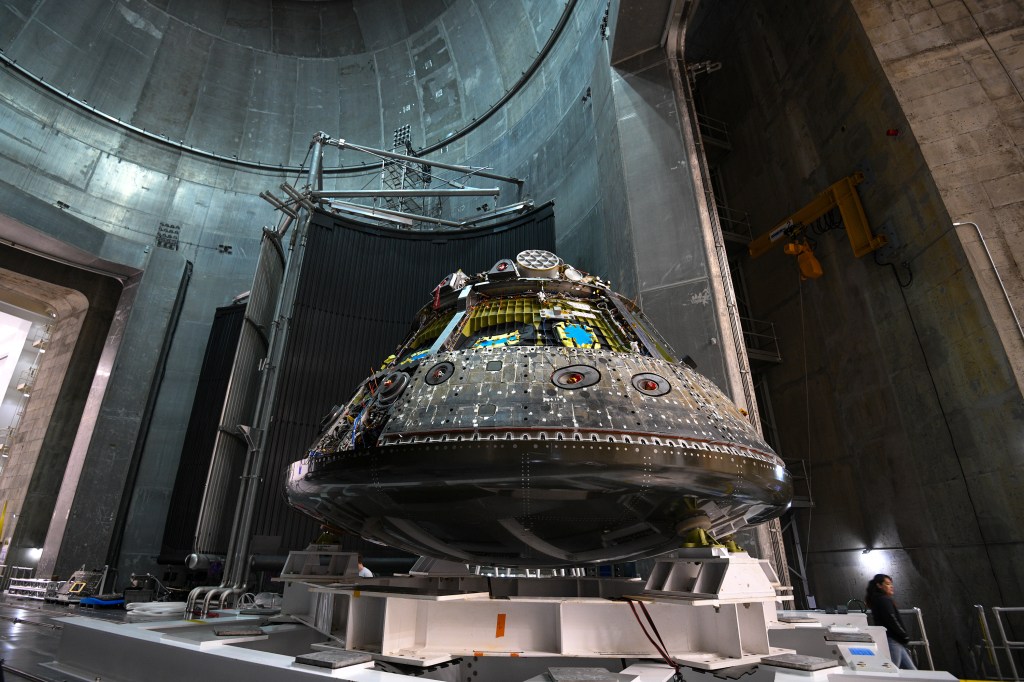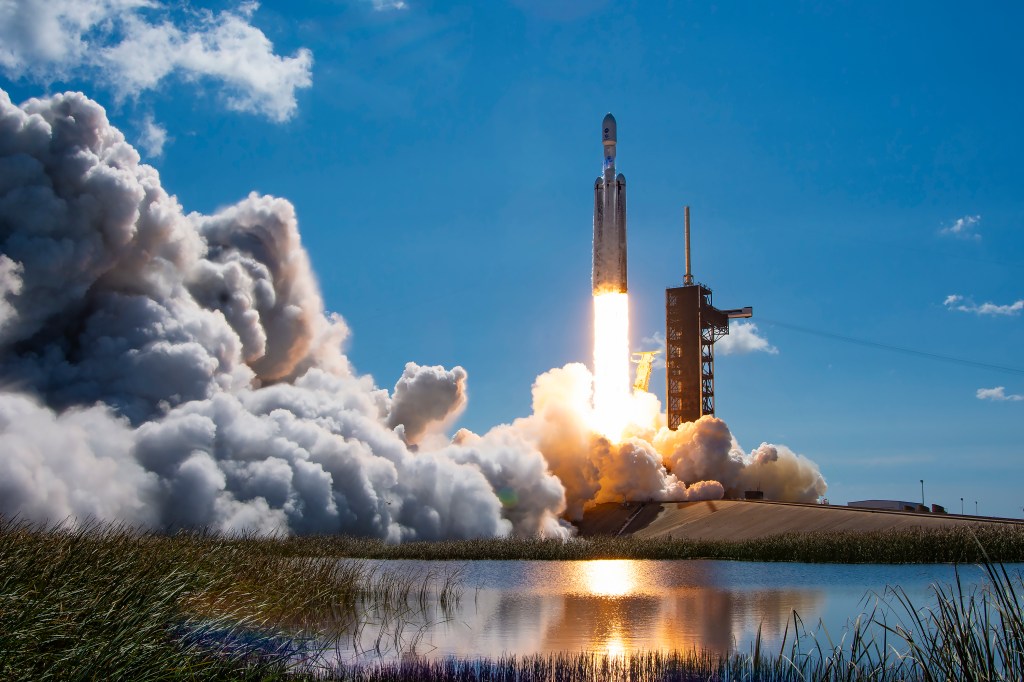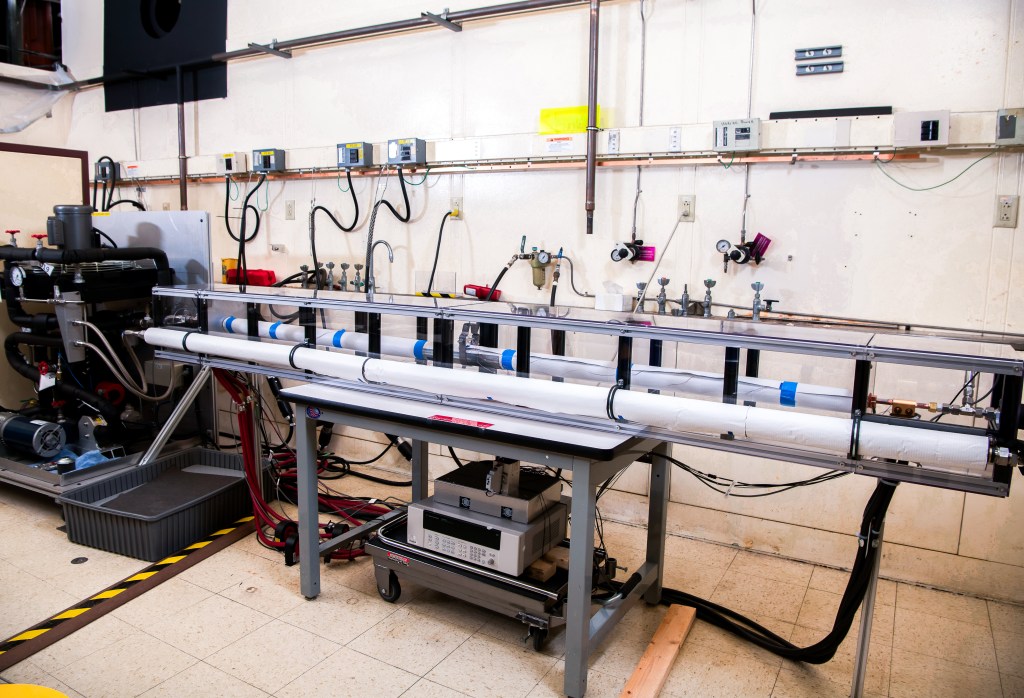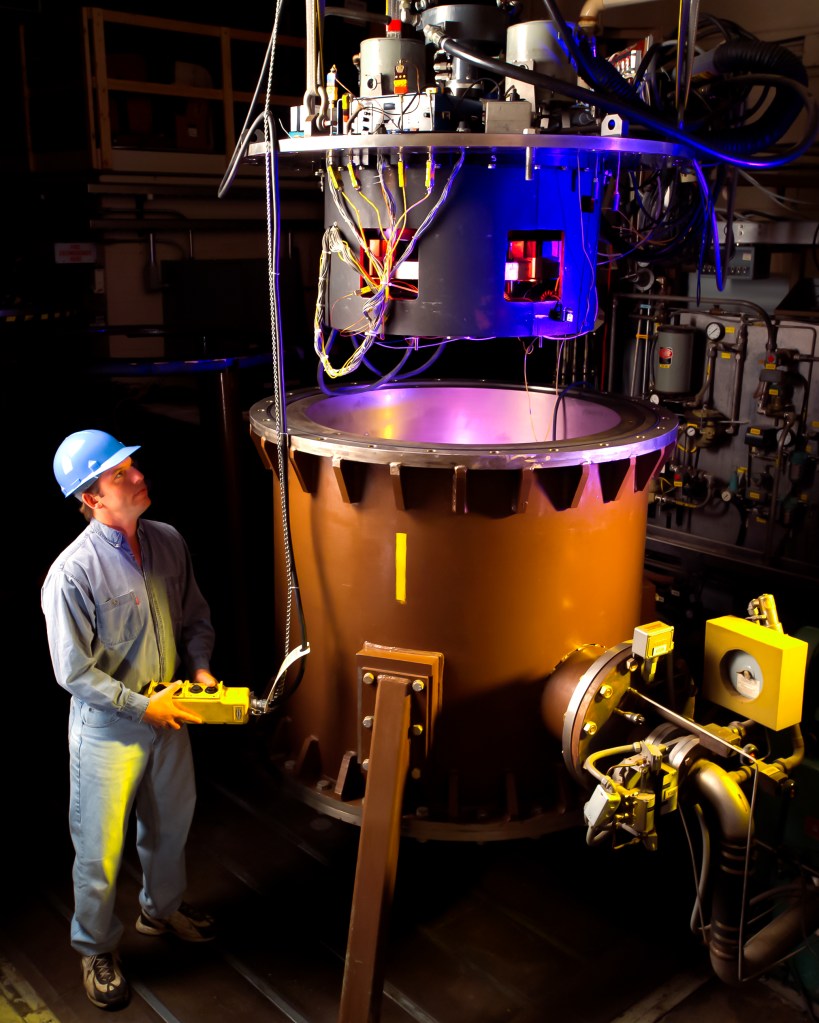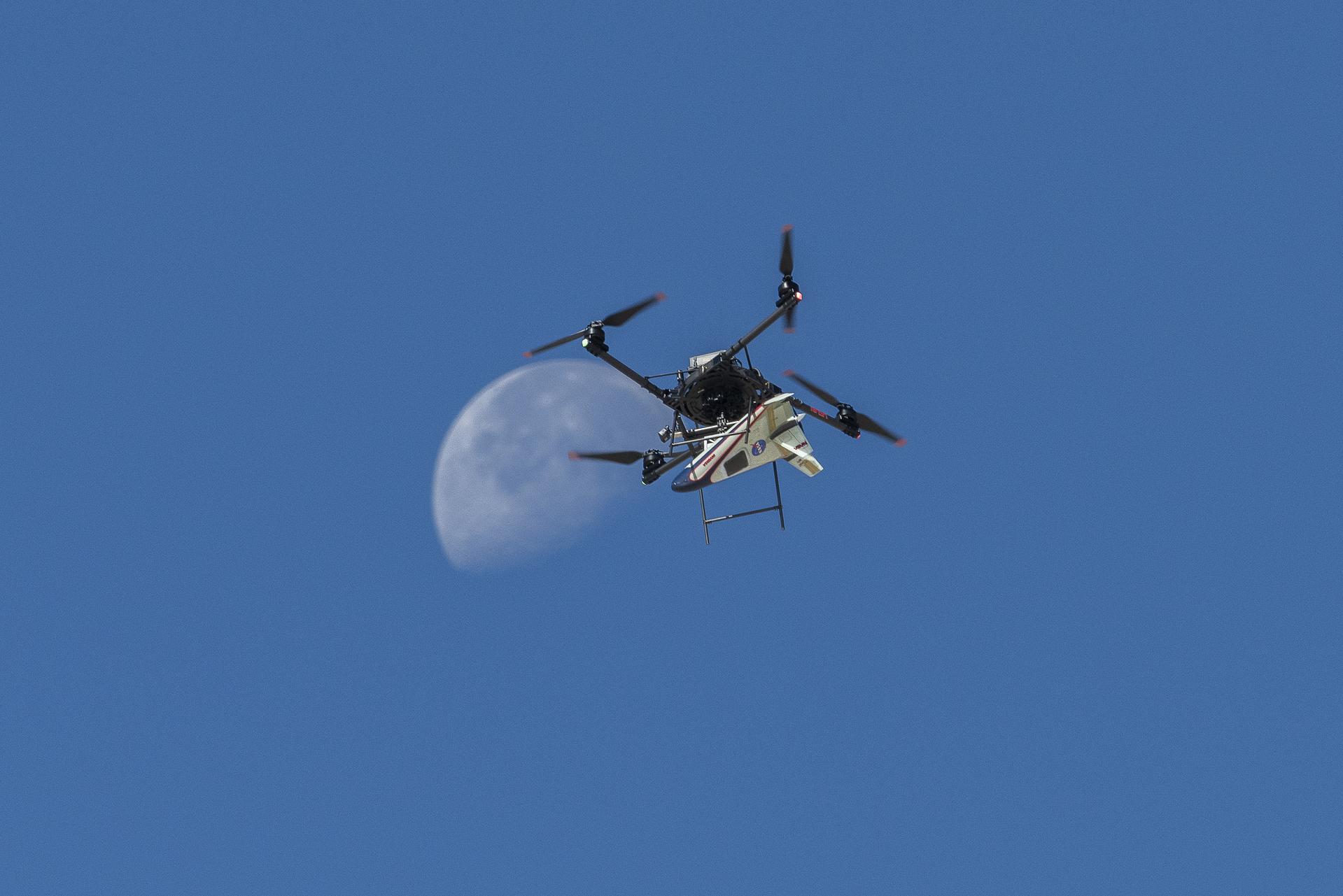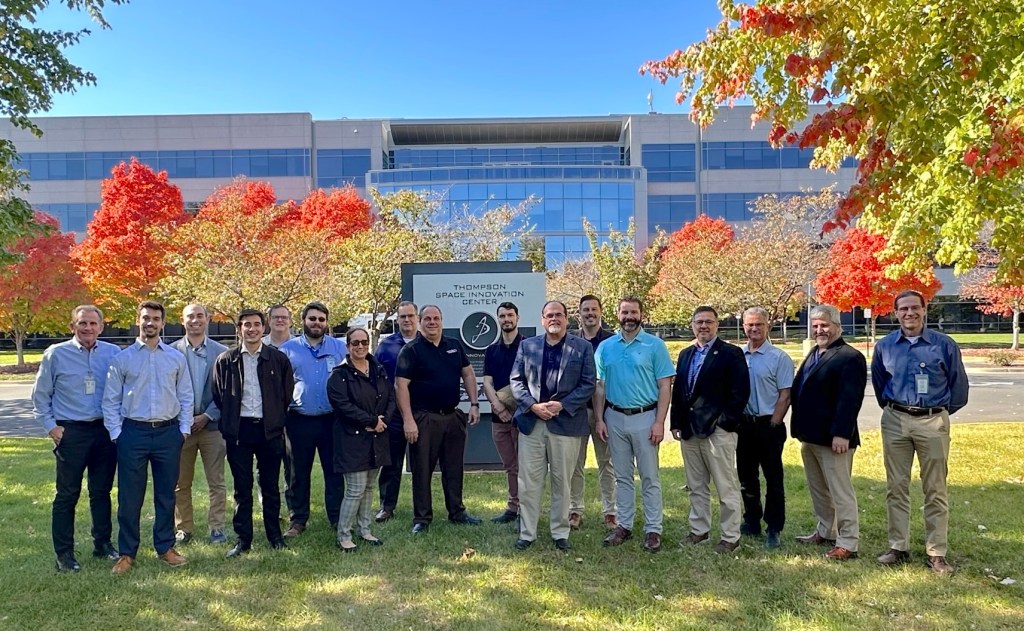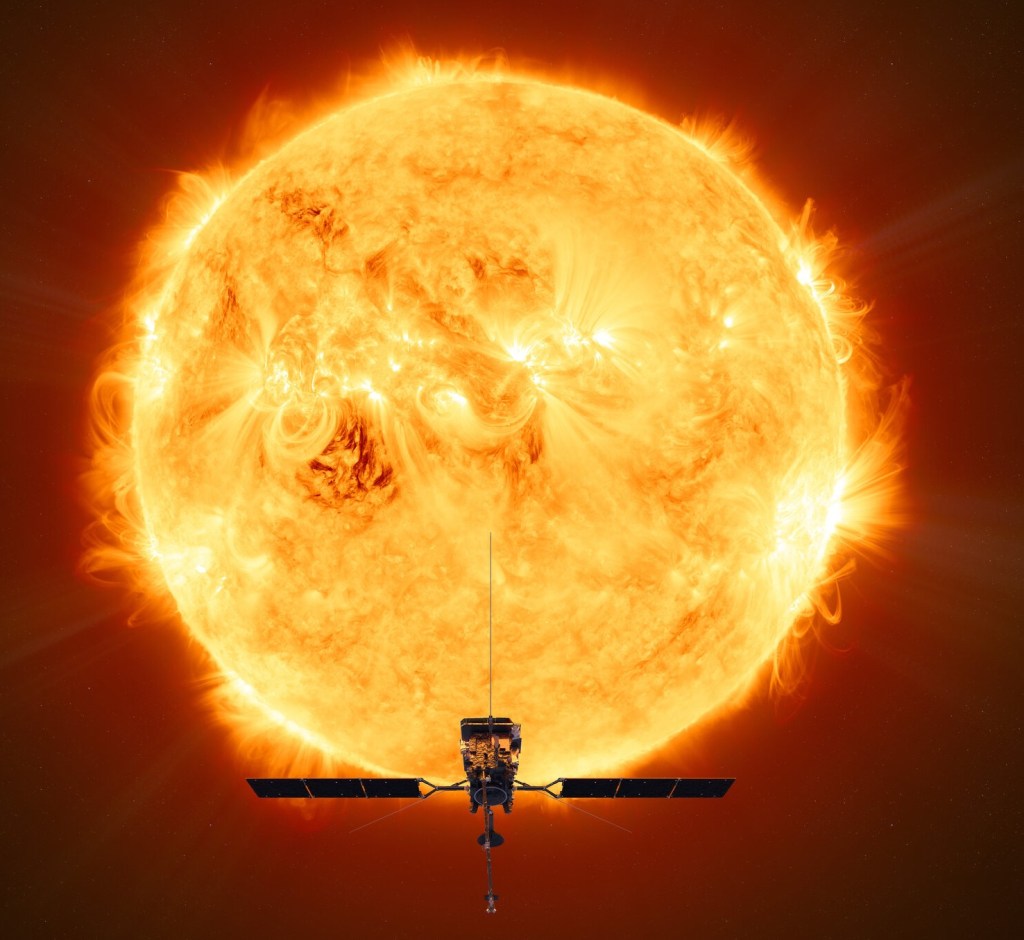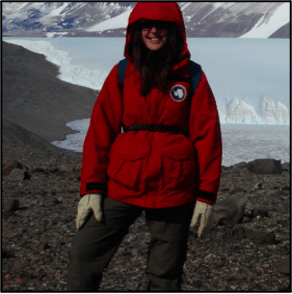
Jennifer Heldmann
Research Scientist
Email: Jennifer.L.Heldmann@nasa.gov
Phone: (650)604-5530
Read Jennifer Heldmann‘s interview
Watch Jennifer Heldmann’s TED Talk
Education
B.S., Astrogeophysics, Colgate University
M.S., Space Studies, Minor in Geology, University of North Dakota
Ph.D., Planetary Science, Univ. of Colorado at Boulder
Research Interests
Heldmann’s research interests focus on scientific studies and enabling human exploration of the Moon and Mars. Her Mars research focuses on studies of recent water and ice on the Red Planet through spacecraft data analysis, numerical modeling, and fieldwork in Mars-analog environments such as the Outback of Australia, the Canadian High Arctic, the Atacama Desert, Spitsbergen, the Mojave Desert, and Antarctica, among other locales. Liquid water is especially important to understand climate, geology, and the potential for past and/or present life on Mars. She also studies surface and subsurface ice deposits on both Earth and Mars to further understand the physics, geomorphology, and potential habitability of such cold icy locales in the Solar System.
She is also involved in planning for the future human exploration of Mars and has served on several MEPAG (Mars Exploration Program Analysis Group) special action teams for defining precursor activities needed to enable future human (and continued scientific) exploration of Mars. (e.g., Mars Precursor Science Analysis Group, Human Exploration of Mars Science Analysis Group, Mars-Forward Lunar Objectives Special Action Team, Analysis of the Precursor Measurements of Mars Needed to Reduce the Risk of the First Human Missions to Mars, Mars Concurrent Engineering Science Analysis Group, Human Mars Mission Science Objectives Tiger Team). She has also served as the NASA Science Mission Directorate (SMD) Lead for OSEWG (Optimizing Science and Exploration Working Group) at NASA Headquarters to connect Science Mission Directorate (SMD) science objectives with NASA’s human exploration plans for the inner Solar System. In addition to these planning activities, Heldmann actively participates in research and field campaigns to enable human and robotic exploration of the Solar System with tasks such as working in Science Operations, serving as Science Lead for tactical and strategic science planning for human and robotic missions, and assisting in the development of mission concepts and concepts of operations for multiple analog field campaigns. She is the Principal Investigator (PI) for both NASA’s FINESSE (Field Investigations to Enable Solar System Science & Exploration) and RESOURCE (Resource Exploration and Science of OUR Cosmic Environment) projects through the NASA Solar System Exploration Research Virtual Institute (SSERVI), is the founder and Co-Lead of the NASA/SSERVI Analogs Focus Group, and serves as PI and Co-I on numerous other NASA projects and grants. Heldmann also served on the National Academies of Sciences, Engineering, and Medicine (NASEM) Planetary Science & Astrobiology Decadal Survey 2023-2032 to assess key scientific questions in planetary science and astrobiology, identify priority medium- and large-class missions and other initiatives, and present a comprehensive research strategy for the 2023-2032 timeframe. Heldmann served on the NASEM Panel on Mercury and the Moon and as Co-Lead of the Human Exploration Working Group (HExWG).
Heldmann also studies the Moon with a focus on improving our understanding of lunar volatile deposits. Such studies are important scientifically in terms of Solar System evolution and also are relevant for planning future human exploration of the Moon through the identification of materials that can be used for in situ resource utilization (ISRU). She served on the Science Team, Payload Team, and as the Observation Campaign Coordinator for NASA’s Lunar Crater Observation and Sensing Satellite (LCROSS) mission to study the permanently shadowed regions of the lunar poles. LCROSS successfully impacted the Cabeus crater at the lunar south pole and confirmed the presence of water ice as well as numerous other volatile species on our Moon. She is currently a member of NASA’s VIPER (Volatiles Investigating Polar Exploration Rover) mission science team and helping to develop real-time science operations protocols and science analysis tools for a lunar polar rover mission to explore lunar polar volatiles.
Heldmann also supports NASA’s Artemis plans to return humans to the surface of the Moon by serving the Agency in multiple capacities:
- Artemis III Science Definition Team (SDT). Heldmann served as a member of NASA’s Artemis III Science Definition Team (SDT) to outline top priority science objectives and candidate science programs for the first crewed Artemis mission to the lunar surface. She served as the Lead for outlining science objectives for investigating lunar volatiles.
- NASA’s Contamination and Research Integrity (CaRI) . Heldmann served on NASA’s CaRI Rapid Response team as the NASA Science Mission Directorate authoritative body to provide guidance and recommendations to Artemis development activities that require timely scientific input on topics such as near-term hardware development decisions related to lunar sample collection, stowage and transport, and operational considerations and decisions to maintain the integrity of SMD research activities related to Artemis data.
- Objectives for Human Analog Testing (OHAT). Heldmann serves on the OHAT Working Group (WG) to represent NASA SSERVI analog activities. The OHAT WG was established by NASA to ensure cross-Directorate collaboration and planning to optimize analog field testing across the Agency in support of Artemis human exploration missions.
- Artemis Crew Training. Heldmann serves as a crew trainer to deliver lesson content regarding lunar fundamentals to NASA astronaut crew members, Flight Directors, and EVA (Extra Vehicular Activity) personnel to optimize Artemis science return and surface operations. Heldmann serves as the Lead for creating and delivering training content regarding lunar polar volatiles from both scientific and exploration perspectives.
- Artemis III Geology Team (A3GT). Heldmann serves on the A3GT as Co-Lead for studying lunar polar volatiles. The A3GT is responsible for developing mission science objectives for Artemis III EVAs, developing EVA traverse plans and sampling strategies, supporting mission training, participating in real-time operations with astronauts on the lunar surface, and generating post-mission geology reports.
Awards and Other
- NASA Group Achievement Award, Artemis Earth & Planetary Science Crew Training Team, 2024
- NASA Exceptional Service Award, 2023
- NASA Group Achievement Award, Artemis CaRI Team, 2023
- NASA Group Achievement Award, Artemis III Science Definition Team, 2022
- Association of Women Geoscientists (AWG) Professional Excellence Award, 2021
- NASA Ames Group Achievement Award, VIPER (Volatiles Investigating Polar Exploration Rover), 2021
- National Academies Planetary Science and Astrobiology Decadal Survey 2023-2032: Committee on Mercury and the Moon, 2020-present
- NASA Artemis III Science Definition Team (SDT), 2020
- NASA VIPER (Volatiles Investigating Polar Exploration Rover) mission, Science Team, 2019-present
- NASA Superior Accomplishment Award, Office of Diversity & Equal Opportunity (ODEO), 2020
- NASA Ames Honor Award for Partnerships, RESOURCE Project (PI), 2020
- NASA / SSERVI Angioletta Coradini Mid-Career Award for significant, lasting accomplishments related to exploration, 2019
- Exceptional Achievement for New Opportunities, Enceladus Life Signatures and Habitability Team, 2019
- NASA Ames Group Achievement Honor Award, FINESSE (Field Investigations to Enable Solar System Science and Exploration) Team, 2017
- Certificate of Appreciation, NASA Headquarters, Science Mission Directorate, Contributions to the 2017 Total Solar Eclipse, 2017
- Space Camp Hall of Fame, U.S. Space & Rocket Center, 2017
- NASA Exceptional Scientific Achievement Medal, 2015
- NASA Group Achievement Award, NASA Mojave Volatiles Prospector Team (PI), 2014
- Invited Member, NASA HEOMD (Human Exploration & Operations Mission Directorate) Instrument Team for 2020 Mars Rover; HEOMD Liaison to Mars 2020 Rover Science Definition Team, 2013
- NASA Lunar Science Forum, Science Organizing Committee Chair, 2013
- NASA Resource Prospector Mission (RPM) Science & Landing Site Selection Teams, 2013-2018
- Invited Member, MEPAG Mars Precursor Science Analysis Group, 2012
- NASA Lunar Science Forum, Science Organizing Committee Chair, 2012
- NASA G.I.R.L.S. (Giving Initiative and Relevance to Learning Science), Women@NASA, Invited Inaugural Member, 2012
- NASA Group Achievement Award, LCROSS/LRO Measurements Team, 2011
- NASA Group Achievement Award, Desert-RATS Science Team, 2011
- NASA Group Achievement Award, Lunar Precursor Robotic Team, 2010
- NASA Ames Group Achievement Award, Lunar Regolith Excavation Challenge, 2010
- NASA Ames Group Achievement Award, LCROSS Science & Payload Team, 2010
- NASA Lunar Science Forum, Science Organizing Committee Chair, 2010
- NASA Headquarters Individual Special Act Award, 2009
- NASA Ames Honor Award, LCROSS Project Team, 2009
- NASA Ames Honor Award, Mentor, 2008
- NASA Optimizing Science & Exploration Working Group (OSEWG) Chair, Science Mission Directorate, NASA Headquarters, 2008-2009
- NASA Ames Group Achievement Award, NASA Lunar Science Conference, 2008
- NASA Ames Strategic Leadership Bootcamp, 2008
- Organizing Committee, Workshop on Ares V Solar System Science, 2008
- Invited Team Leader, NASA Optimizing Science & Exploration Working Group (OSEWG) Sampling Conference, 2007
- Invited Member, COSPAR Mars Special Regions Colloquium, 2007
- Superior Achievement Award, NASA Space Science and Astrobiology Division, 2007
- NASA Ames Honor Award, Lunar Science Conference Organizing Team, 2007
- Invited Member, MEPAG Human Exploration of Mars Science Analysis Group, 2007-2008
- Invited Member, MEPAG Mars-Forward Lunar Objectives Special Action Team, 2006
- Science and Payload Team, LCROSS mission, 2006-2009
- Community Representative, MEPAG Goal IV Review Committee: Robotic Precursor Measurements for Human Exploration, 2006-2009
- Invited Member, NASA Astrobiology Science Conference, Science Organizing Committee, 2006
- Outstanding Referee Award, Geophysical Research Letters, 2006
- NASA Group Achievement Award, Mars Analog Research & Tech. Experiment, 2006
- Invited Member, MEPAG Mars Human Precursor Science Steering Group, 2004-2005
- Reviewer, multiple NASA programs including NASA Lunar Science Institute (Program Officer), Moon Mars Analog Mission Activities (invited as Panel Chief, have also served as Program Officer), Mars Data Analysis Program, Planetary Geology and Geophysics (invited as Group Chief), Mars Fundamental Research Program, Planetary Instrument Development and Definition Program (invited as Panel Chief), Astrobiology Science and Technology Instrument Development, Stand Alone Missions of Opportunity (SALMON), Instrument Concepts for Europa Exploration, Small Satellite Technology Program, Lunar Advanced Science and Exploration Research, Lunar Reconnaissance Orbiter Guest Investigator, LADEE Guest Investigator.
Selected Publications
SELECTED PEER-REVIEWED PUBLICATIONS
Mellon, M.T., Sizemore, H.G., Heldmann, J.L., McKay, C.P. and C.R. Stoker. The habitability conditions of possible Mars landing sites for life exploration. Icarus, 408, 115836, 2024.
Hurley, D., Siegler, M.A., Cahill, J., Colaprete, A.C., Costello, E., Deutsch, A.N., Elphic, R.C., Fa, W., Grava, C., Hayne, P., Heldmann, J.L., et al. Surface volatiles on the Moon. Reviews in Mineralogy and Geochemistry 89 (1): 787-827, doi.org/10.2138/rmg.2023.89.18, 2024.
MacKenzie, S.M. et al. Science objectives for Flagship-class mission concepts for the search for evidence of Life at Enceladus. Astrobiology, doi.org/10.1089/ast.2020.2425, 2022.
Deutsch, A.N., Heldmann, J.L., Colaprete, A., Cannon, K.M., and R.C. Elphic. Analyzing surface ruggedness inside and outside of ice stability zones at the lunar poles. Planetary Science Journal 2, 213, doi.org/10.3847/PSJ/ac24ff, 2021.
Heldmann, J.L., Marinova, M.M., Lim, D.S.S., Wilson, D., Carrato, P., Kennedy, K., Esbeck, A., Colaprete, A., Elphic, R., Captain, J., Zacny, K., Stolov, L., Mellerowicz, B., Palmowski, J., Bramson, A.M., Putzig, N., Morgan, G., Sizemore, H., and J. Coyan. Mission architecture using the SpaceX Starship vehicle to enable a sustained human presence on Mars. New Space, doi.org/10.1089/space.2020.0058, 2021.
Deutsch, A.N., Heldmann, J.L., Colaprete, A., Cannon, K.M., and R.C. Elphic. Analyzing surface ruggedness inside and outside of ice stability zones at the lunar poles. Planetary Science Journal 2(5), 213, 2021.
Lim, D.S.S. and J.L. Heldmann. Exploring our Solar System through inter-disciplinary, analog research: an overview of the FINESSE, BASALT and SUBSEA programs. Planetary and Space Sci., doi:10.1016/j.pss.2021.105187, 2021.
Rader, E., Wysocki, R.S., Heldmann, J., Harpp, K. Bosselait, M., and M. Myers. Spatter stability: constraining accumulation rates and temperature conditions with experimental bomb morphology. Bulletin of Volcanology, 82:49, doi:10.1007/s00445-020-01386-4, 2020.
Hughes, S.S., Garry, W.B., Sehlke, A., Christiansen, E.H., Kobs Nawotniak, S., Sears, D.W.G., Elphic, R., Lim, D.S.S., and J.L. Heldmann. Basaltic fissure types on Earth: Suitable analogs to evaluate the origins of volcanic terrains on the Moon and Mars? Planetary and Space Sci. 193, doi:10.1016/j.pss.2020.105091, 2020.
Hood, D.R., Karunatillake, S., Gasnault, O., Williams, A.J., Dutrow, B., Ojha, L., Kobs, S., Kim, K., Heldmann, J.L., and C. Fralick. Contrasting regional soil alteration across the topographic dichotomy of Mars. Geophys. Res. Lttrs, doi.org/10.1029/2019GL084483, 2019.
Lim, D.S.S., Abercromby, A., Nawotniak, S., Lees, D., Miller, M., Brady, A., Miller, M., Mirmalek, Z., Sehlke, A., Payler, S., Stevens, A., Haberle, C., Beaton, K., Chappell, S., Hughes, S., Cockell, C., Elphic, R., Downs, M., and J.L. Heldmann. The BASALT Research Program: Designing and Developing Mission Elements in Support of Human Scientific Exploration of Mars. Astrobiology 19, 3, 2019.
Hughes, S., Haberle, C., Nawotniak, S., Sehlke, A., Garry, W., Elphic, R., Payler, S., Stevens, A., Cockell, C., Brady, A., Heldmann, J.L., and D.S.S. Lim. Basaltic Terrains in Idaho and Hawai‘i as Planetary Analogs for Mars Geology and Astrobiology. Astrobiology 19, 3, 2019.
Sehlke, A., Mirmalek, Z., Burtt, D., Haberle, C., Santiago-Materese, D., Nawotniak, S., Hughes, S., Garry, W., Bramall, N., Brown, A., Heldmann, J.L., and D.S.S. Lim. Requirements for Portable Instrument Suites during Human Scientific Exploration of Mars. Astrobiology 19, 3, 2019.
Hughes S.S., Nawotniak, S.E., Sears, D.W.G., Borg, C., Garry, W., Christiansen, E., Haberle, C., Lim, D.S.S., and J.L. Heldmann. Phreatic explosions during basaltic fissure eruptions: Kings Bowl lava field, Snake River Plain USA. J. Volcanology & Geotherm. Res., 351, 89-104, 2018.
Rader, E., Nawotniak, S., and J.L. Heldmann. Variability of spatter morphology in pyroclastic deposits in Southern Idaho, as correlated to thermal conditions and eruptive environments. Earth and Space Science, doi.org/10.1029/2018EA000377, 2018.
Williams, K.E., Heldmann, J.L., McKay, C.P., and M.T. Mellon. The effects of snow and salt on ice stability in University Valley, Antarctica. Antarctic Science, 30, 67-78, 2018.
Williams, K.E., Heldmann, J.L., McKay, C.P., and M.T. Mellon. The effects of snow cover and salt on ice table stability in University Valley, Antarctica. Antarctic Science, 1-12, 2017.
Heldmann, J.L., Stoker, C.R., Gonzales, A., McKay, C.P., Davila, A., Glass, B.J., Lemke, L., Paulsen, G., Willson, D., and K. Zacny. Red Dragon drill missions to Mars. Acta Astronautica, 141, 79-88, 2017.
Susko, D.A., Karunatillake, S., Kodikara, G., Skok, J.R., Wray, J., Heldmann, J.L., Cousin, A., and T. Judice. A record of igneous evolution in Elysium, a major martian volcanic province. Nature Scientific Reports 7, doi:10.1038/srep43177, 2017
Neish, C., Hamilton, C.W., Hughes, S.S., Kobs Nawotniak, S., Garry, W.B., Skok, J.R., Elphic, R.C., Schaefer, E., Carter, L.M., Bandfield, J.L., Osinski, G.R., Lim, D., and J.L. Heldmann. Terrestrial analogues for lunar impact melt flows. Icarus 281, 73-89, 2017.
Heldmann, J.L., Colaprete, A.C., Elphic, R., Lim, D., Deans, M., Cook, A., Roush, T., Skok, J.R., Button, N., Karunatillake, S., Stoker, C., Marquez, J., Shirley, M., Kobayashi, L., Lees, D., Bresina, J., and R. Hunt. Lunar polar rover science operations: Lessons learned and mission architecture implications derived from the Mojave Volatiles Prospector (MVP) terrestrial field campaign. Adv. Space Research. 58, 545-559, 2016.
Heldmann, J.L., Colaprete, A.C., Elphic, R., Bussey, B., McGovern, A., Beyer, R., Lees, D., and M. Deans. Site selection and traverse planning to support a lunar polar rover mission: A case study at Haworth Crater. Acta Astronautica 127, 308-320, 2016.
Lacelle, D., Laplame, C., Davila, A., Pollard, W., Marinova, M., Heldmann, J.L., and C. McKay. Solar radiation and air and ground temperature relations in the cold and hyper-arid Quartermain Mountains, McMurdo Dry Valleys of Antarctica. Permafrost and Periglacial Processes, 27, 163-176, 2015.
Heldmann, J.L., Colaprete, A.C., Goldstein, D., Asturias, D., and Summy, D. Evolution of the dust and water ice plume components as observed by the LCROSS visible camera and UV visible spectrometer. Icarus 254, 262-275, doi:10.1016/j.icarus.2015.02.026, 2015.
Heldmann, J.L., Colaprete, A.C., Elphic, R., Mattes, G., Ennico, K., Fritzler, E., Marinova, M., McMurray, R., Morse, S., Roush, T., and C. Stoker. Real-time science operations to support a lunar polar volatiles rover mission. Adv. Space Research. 55, 2427-2437, doi:10.1016/j.asr.2014.07.037, 2015.
Elphic, R.C., Heldmann, J.L., Marinova, M., Colaprete, A.C., Fritzler, E., McMurray, R., Morse, S., Roush, T., Stoker, C.R., Deans, M. and T.F. Smith. Simulated real-time lunar volatiles prospecting with a rover-borne neutron spectrometer. Adv. Space Research. 55, 2438-2450, doi:10.1016/j.asr.2015.01.035, 2015.
Roush, T.L., Colaprete, A.C., Elphic, R., Ennico-Smith, K., Heldmann, J.L., Stoker, C.R., Marinova, M., McMurray, R., Fritzler, E., and S. Morse. In situ resource utilization (ISRU) field expedition 2012: Near infrared volatile spectrometer system (NIRVSS) science measurements to site knowledge. Adv. Space Research. 55, 2451-2456, doi:10.10.1016/j.asr.2014.08.033, 2015.
Sears, D.W.G., Tornabene, L.L., Osinski, G.R., Hughes, S.S., and J.L. Heldmann. Formation of the “ponds” on asteroid (433) Eros by fluidization. Planetary and Space Sci. 117, 106-118, 2015.
Heldmann, J.L., Cameron, M., McKay, C.P., Eriksson, E., Marinova, M., Davila, A., Lacelle, D., Pollard, W., and D.T. Andersen. The high elevation Dry Valleys in Antarctica as analog sites for subsurface ice on Mars. Planetary and Space Sci., 85, 53-58, 2014.
Heldmann, J.L., Schurmeirer, L., McKay, C.P., Stoker, C., Marinova, M.M., and A. Davila. Midlatitude ice-rich ground on Mars as a target in the search for evidence of life and for in situ resource utilization on human missions. Astrobiology, doi:10.1089/ast.2013.1103, 2014.
Mellon, M.T., McKay, C.P., and J.L. Heldmann. Polygonal ground in the McMurdo Dry Valleys of Antarctica and its relationship to ice-table depth and the recent Antarctic climate history. Antarctic Science, doi:10.1017/S0954102013000710, 2013.
Heldmann, J.L., Pollard, W., McKay, C.P., Marinova, M.M., Davila, A., Williams, K.E., Lacelle, D. and D.T. Andersen. Comparison of geomorphic features formed in the presence of ice-cemented soil in the Upper Dry Valleys, Antarctica with observations at the Mars Phoenix landing site. Planet. and Space Sci., 85, 53-58, doi:10.1016/j.pss.2013.05.019, 2013.
Marinova, M.M., McKay, C.P., Heldmann, J.L. et al. Distribution of the depth to ice-cemented soils in the high-elevation Quartermain Mountains, Dry Valleys of Antarctica. Antarctic Science, doi:10.1017/S095410201200123X, 2013.
McKay, C.P., Stoker, C.R., Glass, B.J., Dave, A.I., Davila, A.F., Heldmann, J.L., Marinova, M.M., Fairen, A.G., Quinn, R.C., Zacny, K.A., Paulsen, G., Smith, P.H., Parro, V., Andersen, D.T., Hecht, M.H., Lacelle, D., and W.H. Pollard. The Icebreaker Life mission to Mars: A search for biomolecular evidence for life. Astrobiology, 13, doi:10.1089/ast.2012.0878, 2013.
Lacelle, D., Davila, A.F., Fisher, D., Pollard, W.H., DeWitt, R., Heldmann, J.L., Marinova, M.M., and C.P. McKay. Excess ground ice of condensation-diffusion origin in University Valley, Dry Valleys of Antarctica: Evidence from isotope geochemistry and numerical modeling. Geochim. Cosmochim. Acta, 120, 280-297, 2013.
Colaprete, A., Elphic, R.C., Heldmann, J.L., et al., An overview of the LCROSS mission. Space Sci. Reviews, 167, 3-22, 2012.
Dove, A., Heldmann, J.L., McKay, C.P., and O.B. Toon. Physics of thick seasonal snowpack with possible implications for snow algae. Arctic, Antarctic, & Alpine Science, 44, 36-49, 2012.
Heldmann, J.L., Marinova, M.M., et al. Formation and evolution of buried snowpack deposits in Pearse Valley, Antarctica and implications for Mars. Antarctic Science, doi:10.1017/S0954102011000903, 2012.
Eppler, D. et al. Desert Research and Technology Studies (DRATS) 2010 science operations: Operational approaches and lessons learned for managing science during human planetary surface missions. Acta Astronaut., doi:/10.1016/j.actaastro.2012.03.009, 2012.
Smith et al., Lunar Net – a proposal in response to an ESA M3 call in 2010 for a medium sized mission. Esp. Astron., 33, 587-644, doi:/10.1007/s10686-011-9250-5, 2012.
Heldmann, J.L. et al. LCROSS (Lunar Crater Observation and Sensing Satellite) Observation Campaign: Strategies, implementation, and lessons learned. Space Sci. Reviews, doi: 10.1007/s11214-011-9759-y, 2011.
Lacelle, D., Pollard, W, Andersen, D., Davila, A., Heldmann, J.L., et al., Stability of massive ground ice bodies in University Valley, McMurdo Dry Valleys of Antarctica: Using stable O–H isotope as tracers of sublimation in hyper-arid regions. Earth. Planet. Sci. Letters, 301, 2011.
Rask, J., Heldmann, J.L., Smith, H., Battler, M., and C. McKay. The NASA Spaceward Bound field training curriculum. In Garry, W.B., and Bleacher, J.E., eds., Analogs for Planetary Exploration: Geol. Soc. Amer. Special Paper 483, p.157–163, 2011.
Colaprete, A., Schultz, P., Heldmann, J.L., et al. The detection of water within the LCROSS ejecta plume. Science 330, doi:10.1126/science.1186986, 2010.
Kminek, G., Rummel, J.D., Cockell, C.S., Atlas, R., Barlow, N., Beaty, D., Boynton, W., Carr, M., Conley, C.A., Davila, A.F., Debus, A., Doran, P., Hecht, M., Heldmann, J.L., et al. Report of the COSPAR Mars special regions colloquium. Adv. Space Res., 46, 811-829, 2010.
Heldmann, J.L., Conley, C., Fletcher, L., Brown, A.J., Bishop, J., and C.P. McKay, Liquid water origin for Atacama Desert mudflow and recent gully deposits on Mars. Icarus, doi:10.1016/j.icarus.2009.09.013, 2009.
Williams, K., Toon, O.B., Heldmann, J.L., and M.T. Mellon. Ancient melting of mid-latitude snowpacks on Mars as a water source for gullies. Icarus, doi:10.1016/j.icarus.2008.12.013, 2008.
Williams, K., Toon, O.B., Heldmann, J.L., McKay, C.P., and M.T. Mellon. Stability of mid-latitude snowpacks on Mars. Icarus, doi:10.1016/j.icars.2008.03.017, 2008.
Preito-Ballesteros, O., Martinez-Frias, J., Schutt, J., Sutter, B., Heldmann, J.L., Bell, M.S., Battler, M., Cannon, H., Gomez-Elvira, J., and C.R. Stoker. The subsurface geology of Rio Tinto: Material examined during a simulated Mars drilling mission for the Mars Astrobiology Research and Technology Experiment (MARTE). Astrobiology, 8, doi:10.2089/ast.2006.0107, 2008.
Heldmann, J.L., Carlsson, E., Johansson, H., Mellon, M.T., and O.B. Toon. Observations of martian gullies and constraints on potential formation mechanisms, Part II: The northern hemisphere. Icarus, doi:10.1016/j.icarus.2006.12.010, 2007.
Williams, K.E., Toon, O.B. and Heldmann, J.L. Modeling water ice lifetimes at recent martian gully locations. Geophys. Res. Letters, 34, doi:10.1029/2007GL029507, 2007.
Heldmann, J.L., Brown. A.J., Clarke, J.D., Martinez, E., Rupert, S.M., and M. Thomas. Follow the Water: Applying a Mars exploration strategy to the Arkaroola analog region, South Australia. In Mars Analog Research, American Astronautical Society Science and Technology Series, 2006.
Jamtveit, B., Hammer, O., Andersson, C., Dysthe, D., Heldmann, J.L., and M.L. Fogel. Travertines from the Troll thermal springs, Svalbard. Norwegian. J. of Geol., 387-395, 2005.
Heldmann, J.L., Pollard, W.H., McKay, C.P., Andersen, D.T., and O.B. Toon. Annual development cycle of an icing deposit and associated perennial spring activity on Axel Heiberg Island, Canadian High Arctic. Arctic, Antarctic, & Alpine Res., 37, 127-135, 2005.
Heldmann, J.L., Toon, O.B., Pollard, W.H., Mellon, M.T., Pitlick, J., McKay, C.P., and D.T. Andersen. Formation of martian gullies by the action liquid water flowing under current martian environmental conditions. J. Geophys. Research, 110, doi:10.1029/2004JE002261, 2005.
Heldmann, J.L. and M.T. Mellon. Observations of martian gullies and constraints on potential formation mechanisms. Icarus, 168, 285-304, 2004.
McKay, C., Andersen, D., Pollard, W.H., Heldmann, J.L., Doran, P., Fritsen, C., and J. Priscu, Polar lakes, streams, and springs as analogs for the hydrological cycle on Mars. In Water on Mars and Life, edited by T. Tokano, Springer-Verlag, Berlin, 2004.
Heldmann, J.L. and M.T. Mellon. Gullies on Mars and constraints imposed by Mars Global Surveyor data. Astrobiology, 2, No. 4, 2002.
Andersen, D.T., Pollard, W.H., McKay, C.P. and J.L. Heldmann. Cold springs in permafrost on Earth and Mars. J. Geophys. Research, 107 (E3), 2002.
deMello, D.F., Schaerer, D., Leitherer, C., and J.L. Heldmann. Massive star populations in I Zw 18: A probe of stellar evolution in the early universe. In Dwarf Galaxies and Cosmology’, Eds. Thuan, T.X., Balkowski, C., Cayette, V., and J. Tran Than Van, Editions Frontieres (Gyf-sur-Yvette, France), arXiv:astro-ph/9805352, 1998.
deMello, D.F., Schaerer, D., Heldmann, J.L., and C. Leitherer. Searching for Wolf-Rayet starts in I Zw 18: the origin of He II emission. Astrophys. Journal, 507, doi:10.1086/306317.


